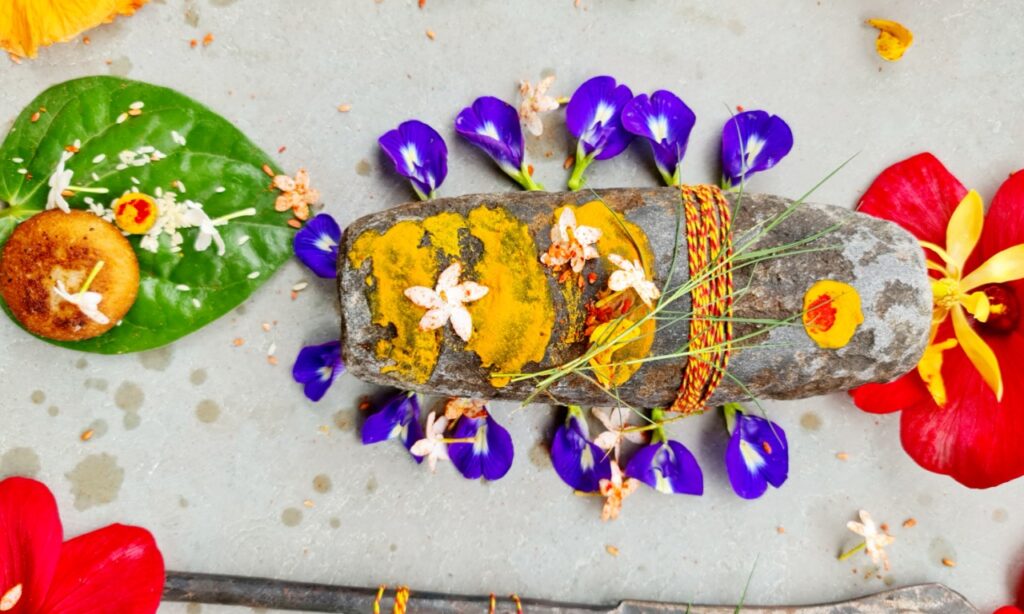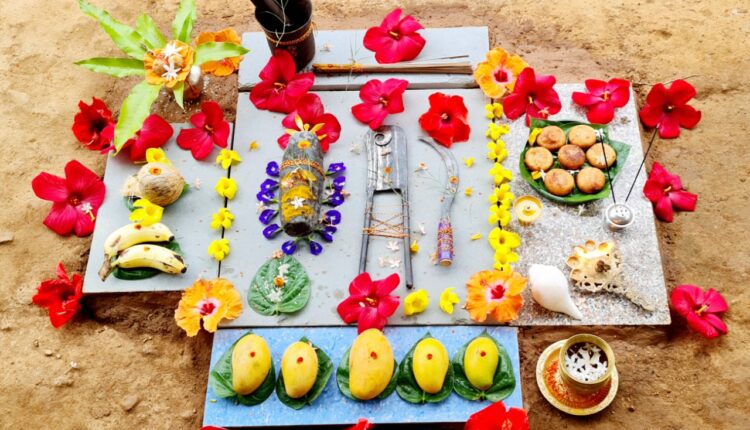Rich cultural legacy of festival celebrating womanhood explained
By Panchami Manoo Ukil*
After three days of Raja (pronounced as rawjaw) revelry, on the fourth day today we observed “Basumati Snan”, the ritual bathing of Mother Earth. Woven into this monsoon festival of “Rawjaw” are the more intense sensibilities of sustainability and gender empowerment.
“Rawjaw” has been derived from “Rajaswala” which means “one in a state of menstruation”. It is believed that during the three days of rawjaw, Mother Earth (Bhu Devi) is in a state of menstruation. Bhu Devi is one of the consorts of Lord Jagannath and hence this festival has a direct connect with the Jagannath cult, a cult that humanises God in order to make him approachable and relatable.
On the ‘Ratnavedi” inside the “vimana” or sanctum sanctorum of the temple of Lord Jagannath in Puri are seated the three siblings, Lord Balabhadra, Goddess Subhadra and Lord Jagannath. Along with them is Lord Sudarshan. Together these four deities make up the “chaturdha murti”. Along with the “chaturdha murti” on the Ratnavedi are seated Goddess Sri Devi (Lakshmi) carved out of gold, and Goddess Bhu Devi (Bishwadhatri), carved out of silver. The seventh deity on the Ratnavedi is Neelamadhava who is carved out of neem wood like the “chaturdha murti.”

Bhu Devi or Goddess Bishwadhatri, the consort of Lord Jagannath representing the Earth element, goes into menstruation during the three days of rawjaw. Once the earth goes into a state of menstruation, all activities even remotely connected to the earth come to a standstill. The idea is to allow the earth to rest and recuperate. Rawjaw therefore is primarily a festival that venerates and celebrates the power of womanhood, the power of procreation, discarding any stigma attached to this natural process that is fundamental to life.
The Manu Smriti spells out the “Pancha Soona” or five sins committed by householders during the course of everyday life.
“panchasoonya gruhastasya chullee
peshanyupaskaraha kandani cha
udakumbhashcha badhyate
yaas to vaahayan

Meaning: There are five slaughter houses in the house of a householder. The hearth, the grinding stone, the broom, the pestle and mortar, and the water vessel. He kills millions of small and invisible creatures which bind him to inevitable sin.
The pancha- soonas therefore are:
Kandani – pounding
Peshani – grinding
Udakumbi – washing pots and pans
Marjani – sweeping and cleaning
Chulli – lighting of hearth
So, when the Earth goes into menstruation, all agriculture implements are kept aside. Also kept aside are implements relating to the household activities mentioned above like sila, hema-dasta, gua-kati, daa, kathi-jhaadu etc, which are used for pounding, cutting, grinding, sweeping etc. In some villages, huge urns of water are stored so that water is not needed to be drawn out of wells for the three days of rawjaw.
With no work to be done, there is an air of celebration for three days – “pahili rawjaw”, “rawjaw sankranti” and “sesha rawjaw”. But within the celebratory mood, there is a conscious attempt to allow the earth to rest, relax and rejuvenate. So deep is this intent that no one walks or tramples barefeet on the earth for three days. Banana leaves are tied around the feet as a mark of respect for the resting earth.
The day before the commencement of rawjaw is observed as “sawjaw-baajaw” or the day of prep and prime. Traditional wood-fired cooking hearths or “chullis” are not lit during the three days of rawjaw. Therefore, before the commencement of the first day of celebration or “pahili raja”, ladies of the house prepare delicious “pitha”, which is mainly rice flour cakes and dumplings with sweet and savoury fillings, baked or steamed.
Accompaniments for pitha include various types of vegetable curries like “ghantaw”, and traditional mutton curry. “Kheer” is also made as an accompaniment. Vessels containing these cooked dishes are placed in large earthen bowls of water as a method of natural refrigeration. New clothes are worn everyday over the three days. Feet are painted with alta while foreheads of young girls are adorned with delicate floral patterns of sandalwood dots.

Swings made of jute rope are suspended from the branches of large trees and decorated with leaves of mango and devdaru. Women and girls chew “paan”, play on the swings singing traditional songs and indulge in games of cards, ludo and a native game activity called “puchi” which is a test of stamina and technique – (“puchi” incidentally has been proved to be a practice that safeguards the reproductive system in women.) Pitha and delicacies are shared with neighbours and sent to the house of relatives in nearby villages. Amidst the rejoicing, this is also a time for family bonding as no work means that everyone is thrown together. Over and above everything else, these three days of rawjaw are meant for women to completely abstain from all daily chores and enjoy a well-earned rest.
On the fourth day, Mother Earth comes out of menstruation, rested and restored. A symbolic bath is given to the earth, with the grinding stone or “sila pua” being consecrated as a symbol of the earth. All implements that had been kept aside are brought out along with the “sila pua” and bathed with turmeric water. A ceremonial ritual follows with offerings of fruits of the season and some cooked delicacies, the ritual indicating a resumption of normal routine.

More than 95% of life on land resides in soil in the form of microbes and fungi. This microbial activity drives the process of aggregation which enhances soil structural stability, aeration, infiltration and water-holding capacity. Modern farming methods have severely compromised soil microbial communities, thereby reducing the liquid carbon transferred to and stabilised in soil.
Not permitting any soil-related activity for three days of rawjaw meant that the microbes which enhance soil quality are allowed to proliferate and do their work undisturbed so that the soil is rejuvenated and prepared for the next harvest. These microbes are the millions of small and invisible creatures mentioned in the Manu Smriti, the killing of which is a sin so great that it demands the householder to perform the redemption sacrifice of “pancha-yajna”.
Ecology and the spirit of nurturing the environment are steeped in our culture and manifests in our traditions. The wisdom of “Sanatan Dharma”, all-encompassing and brimming with the power of astuteness is imperishable and eternal. It postulates a purposeful existence that includes the responsibility to care for the earth. Protecting the earth and the environment is part of our “Dharma”.
The monsoons are well and truly here with dark grey clouds keeping the sun away. The earth is drenched, ready to nourish and nurture. We bathed the earth in the symbolic ritual of “Basumati Snan” this morning, the beauty and wisdom of the rituals as always instilling a sense of pride on being a part of such a rich cultural legacy.
May the Earth heal
The author is a well-known educator, birdwatcher, conservationist and writer who is presently the School Leader and Vice-Chairperson of The DN Wisdom Tree Global School, Bhubaneswar.
DISCLAIMER: The views expressed in the article are solely those of the author and do not in any way represent the views of Sambad English.


Comments are closed.